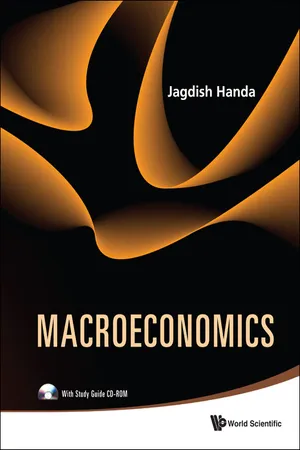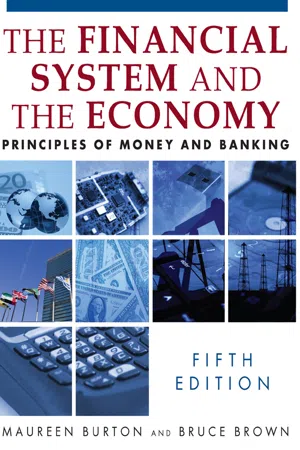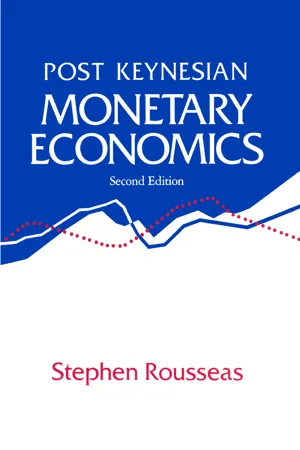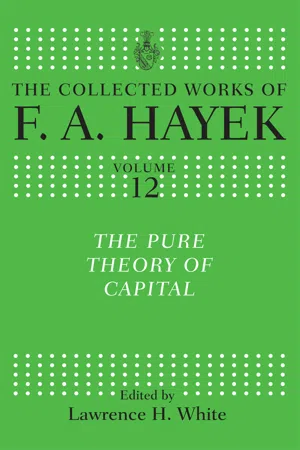Economics
Money Demand Curve
The money demand curve represents the relationship between the quantity of money demanded and the interest rate. It illustrates how the quantity of money that individuals and firms want to hold changes as the interest rate fluctuates. As the interest rate decreases, the quantity of money demanded typically increases, and vice versa.
Written by Perlego with AI-assistance
Related key terms
7 Key excerpts on "Money Demand Curve"
- eBook - ePub
- W. Charles Sawyer, Richard L. Sprinkle(Authors)
- 2020(Publication Date)
- Routledge(Publisher)
This is shown as MS 1 in Figure 15.1. On the other hand, if the central bank raises the discount rate, raises the reserve requirement, or sells bonds, the supply of money declines. This is shown in Figure 15.1 as a shift in the money supply inwards or to the left and is represented by MS 2. The demand for money is illustrated in Figure 15.2. Like virtually all demand curves, the demand for money slopes downward, indicating that as interest rates fall, the amount of money that individuals and firms are willing and able to hold increases. This change in the amount of money demanded is illustrated in the figure by moving from point A to point B. As interest rates change, individuals and firms adjust the quantity of money that they are willing and able to hold by moving along the demand curve. Like all demand curves, the relationship between the price and quantity demanded is based on the assumption that everything else has been held constant. In the case of the demand for money, the major determinants being held constant are real income and the price level. If either one of these determinants changes, the entire demand for money will shift. Both increases and decreases in the demand for money (shifts) are shown in Figure 15.3. For example, if the level of real income and/or the price level increase, the demand for money will increase (shift) to the right as indicated by MD 1. On the other hand, if real income and/or the price level decrease, the demand for money will decrease (shift) to the left as indicated by MD 2. FIGURE 15.2 The demand for money FIGURE 15.3 Change in the demand for money By combining the supply and demand for money, we can determine the equilibrium interest rate. Given a particular level of income and prices (demand) and given the supply of money determined by the central bank, the equilibrium in the money market is at point E and the equilibrium interest rate would be equal to i as shown in Figure 15.4 - eBook - ePub
Macroeconomics
(With Study Guide CD-ROM)
- Jagdish Handa(Author)
- 2010(Publication Date)
- WSPC(Publisher)
1The money supply and the money stock are identical in the case where the money supply is exogenously determined, usually by the policies of the central bank. In such a case, it is independent of the interest rate and other economic variables, though it may influence them. In this case, the money supply ‘curve’ will be a vertical line, as shown by the line M s in Figure 2.1b , with the money supply as M 0 . Much of the monetary and macroeconomic reasoning of a theoretical nature assumes this case, so that the terms ‘money stock’ and ‘money supply’ are used synonymously. One has to judge from the context whether the two concepts are being used as distinct or as identical ones.Note that the symbol M in Figures 2.1a and 2.1b can represent any of the relevant money supply variables, i.e., M 1, M 2, etc. These symbols were defined earlier.The control of the money supply rests with the monetary authorities. Their policy with respect to changes in the money supply and interest rates is known as monetary policy.2.3 The Nominal Versus the Real Value of the Money SupplyIt is important to distinguish between the nominal and the real value of the money stock. The nominal value of money is in dollars — i.e., in term of money itself as the measuring unit. The real value of money is in terms of its purchasing power over goods and services. Thus, the nominal value of a $1 note is 1 — and that of a $20 note is 20. The real value of money is the amount of goods and services one unit of money can buy and is the reciprocal of the price level of the commodities (goods and services) traded in the economy. It equals 1/P where P is the price level in the economy. The real value of money is what we usually mean when we use the term ‘the value of money’. The real value of M 1 equals M1/P and the real value of M 2 equals M2/P , where P - eBook - ePub
Macroeconomic Theory: A Short Course
A Short Course
- Thomas R. Michl(Author)
- 2015(Publication Date)
- Routledge(Publisher)
transactions motive. This part of the demand for money is called the transactions demand for money. If our income goes up, we will spend more on consumer goods and therefore we will need to have liquidity available in the form of cash or a checking account balance.The interest rate affects our demand for money because any wealth held in money form cannot earn interest. The interest rate is the opportunity cost or penalty for holding wealth in liquid form. Because the interest rate is the cost of liquidity, we will desire less money and more bonds in our optimal portfolio as the interest rate increases. This is the asset motive, or speculative motive for holding money, and this part of the demand for money is called the speculative demand. (We will explain why the peculiar term speculative is used later.)In general, the demand for money is written as a function Md = PL(Y, i) where PY represents nominal income. The symbol L derives from the fact that this function describes the demand for liquidity, and this approach to asset markets is called the theory of liquidity preference. The simplest linear form of the demand for money isM d= P()d 1Y −d 2iThe price level appears outside the parenthesis in conformity with economic theory. If prices double (say), the demand for money should also double. The parameters d1 and d2 will be called the income sensitivity and the interest sensitivity of the demand for money. According to economic theory, their values depend on the underlying preferences of the households and on institutional details of business organizations and the financial system.The demand for money in real terms is also called the demand for real balances. By simply rearranging terms in the linear demand for money, it is written(5.1)It turns out to be much easier to work with the demand for and supply of real balances.=M dPd 1Y −d 2iWhen economic agents choose a demand for money, they also choose the velocity of money. For example, under Equation (5.1), the velocity of money would be defined by V = PY/M = Y/(d1 Y − d2 i). In general, the velocity of money is a function of real income and interest rates, or V = V (Y, i - eBook - ePub
The Financial System and the Economy
Principles of Money and Banking
- Maureen Burton, Bruce Brown(Authors)
- 2014(Publication Date)
- Routledge(Publisher)
Equation (20-3) . The plus sign over real income signifies the direct or positive relationship between real income and demand.(20-3) Exhibit 20-4 shows various demand curves for real money balances. Real money balances are measured on the horizontal axis, and the interest rate is plotted on the vertical axis. Note that for every level of real income, there is a different demand curve, showing an inverse relationship between the quantity of real money balances demanded and the interest rate, ceteris paribus. If real income increases, the demand curve for real money balances shifts to the right and there is an increase in demand. If real income decreases, the demand curve shifts to the left and there is a decrease in demand.Recap20-4 The Demand for Real Money BalancesEach demand curve is drawn for a different level of real income. For simplicity, we are referring only to real income as a determinant of the position of the demand curve, recognizing that the level of production and sales is also a determinant. (Because production and sales are highly correlated with real income, this analysis is not significantly affected.) Because a direct relationship exists between the demand for real money balances and real income, if real income changes, the demand curve shifts. If the interest rate changes, ceteris paribus, there is a change in the quantity demanded of real money balances and a movement along a single curve.The demand for real money balances by households and firms is directly related to real income. That is, increases in real income increase demand while decreases in real income decrease demand. Likewise, ceteris paribus, quantity demanded is inversely related to the interest rate. The interest rate is the opportunity cost associated with holding real money balances. Increases in the interest rate, ceteris paribus, decrease quantity demanded, while decreases in the interest rate, ceteris paribus, increase quantity demanded. - eBook - ePub
- Krish Bhaskar, David F. Murray(Authors)
- 2015(Publication Date)
- Routledge(Publisher)
2 and expressing it in nominal money terms gives an expression for the transaction demand for cash balances.11.30This may be rewritten in the form below which is generally used for empirical work.=M t dP( CY / 2 R )1 / 211.31M t d=α PY1 / 2R− 1 / 2where α = √(C/2)Equation 11.31 gives rise to economies of scale in the money balances held by individuals. One person undertaking a given volume of transactions will hold less money than the sum of the balances of two men undertaking half the volume each. This principle has two important implications. Firstly the demand for money will depend on the distribution of money (money concentrated in fewer hands leads to a smaller demand for money) and secondly because of the square root in equation 11.31, any increase in the demand for money will have an amplified effect on the level of money income (a doubling in the quantity of money held would result from a quadrupling of money income).The speculative demand for money
The main distinguishing feature of the Keynesian money market is the inclusion of the liquidity preference schedule which produces an interest elastic demand function. The basis of the speculative demand is the choice which has to be made about the form in which to hold wealth over a period of time; bonds provide a return but involve risk while money (in the absence of inflation) provides no return but also involves no risk.Before considering Tobin’s9 reappraisal of the speculative demand function (the risk aversion demand as he calls it) we shall return briefly to the traditional Keynesian theory of liquidity preference.This theory contains three important elements which may be conveniently summarised as follows:- The theory assumes a critical rate of interest, Rc . If the current rate of interest, R, is above Rc , the individual will wish to hold bonds and if it is below Rc , the individual will hold money. This critical rate is defined by equation 11.32 which was derived in Chapter 5 .
R c=R E1 +R E
- eBook - ePub
- Rousseas(Author)
- 2016(Publication Date)
- Routledge(Publisher)
It is dependent mostly on the level of economic activity in nominal terms (Y). In the Treatise the parameters for this demand function, as we have seen, were: (1) the character of production, (2) the habits of the public and the business world, and (3) the opportunity cost of holding cash balances, i.e., the interest income foregone. A fourth parameter should also be added to the three cited by Keynes, namely, (4) the underlying institutional structure of the financial sector of the economy and its stability, i.e., the absence of rapid financial innovations. Assuming all four to be constant, then the demand for transactions balances is determined by the current pace of production in the industrial sector, or L 1 = L 1 (Y). In the Treatise, however, Keynes explicitly allowed the demand for "cash deposits" to respond to the rate of interest: "[W]hen business is active and the cost of borrowing high, firms will tend to economize in the amount of Business-deposits A which they keep" (italics supplied); that is, the velocity of circulation of Business-deposits A will rise. In the General Theory, Keynes toned this down to a "first approximation" in which L 1 is completely inelastic with regard to the rate of interest. The rate of interest was reserved for the dominant role it was to play in the L 2 demand function for idle balances held as a store of wealth—within which the financial sector of the Treatise was now to be found. The L 1 demand for money is shown in Figure 3.2 as a straight line through the origin with nominal income (Y) on the vertical axis and the demand for transactions, or active, balances (L 1) on the horizontal axis. The tangent of angle a is Y/L 1, which can be written as Y/M 1 since the transactions demand for money has priority over the L 2 demand for idle balances and is the first to be satisfied out of a given exogenous money supply—with the residual, M 2, remaining to satisfy the L 2 demand for speculative balances - eBook - ePub
- F. A. Hayek, Lawrence H. White(Authors)
- 2019(Publication Date)
- Routledge(Publisher)
27 (Chapter 26, p. 332 above), and our main problem will be what will happen to the monetary investment demand schedule. This we can deduce from what happens to this demand schedule described in real terms. All we need to do is to show the effect of the price changes we have already discussed on the demand for investible funds, or to redraw this demand schedule, in terms of the new prices, instead of using the pre-existing price (which is what expressing it in ‘real terms’ essentially means in this connection). Changes in the Monetary Investment Demand Schedule We have seen that, when expressed in real terms, the demand schedule will be tilted by a rise in the price of the final product, that is, that it will be raised on the left and lowered on the right. But as the various kinds of input that will now be in greater demand will also rise in price in different degrees, less real investment will be associated with the investment of any given amount of money, i.e., the monetary investment demand curve, besides being tilted, will also be shifted to the right. Any given amount of real investment, i.e., any amount of investment corresponding to a given marginal rate of profit and leading to a given amount of product, will require more money 17 and will therefore cause the rate of interest to rise to an extent which will depend on the shape of our liquidity preference schedule. If the supply of investible funds were completely inelastic, and the amount invested could not be increased at all, this would clearly mean a considerable rise in the rate of interest and a decrease in the amount of real investment. The tilting of the demand schedule would in this case have the effect of making it profitable to employ less input of the kind which rises in price and more input of the kind which falls in price
Learn about this page
Index pages curate the most relevant extracts from our library of academic textbooks. They’ve been created using an in-house natural language model (NLM), each adding context and meaning to key research topics.






